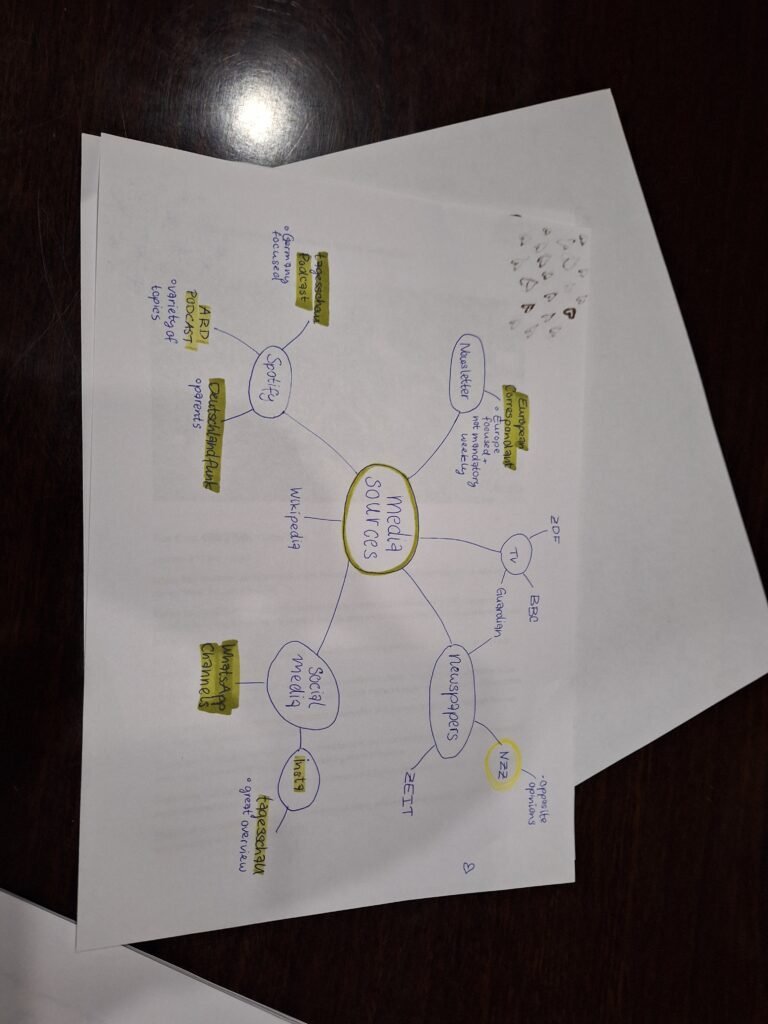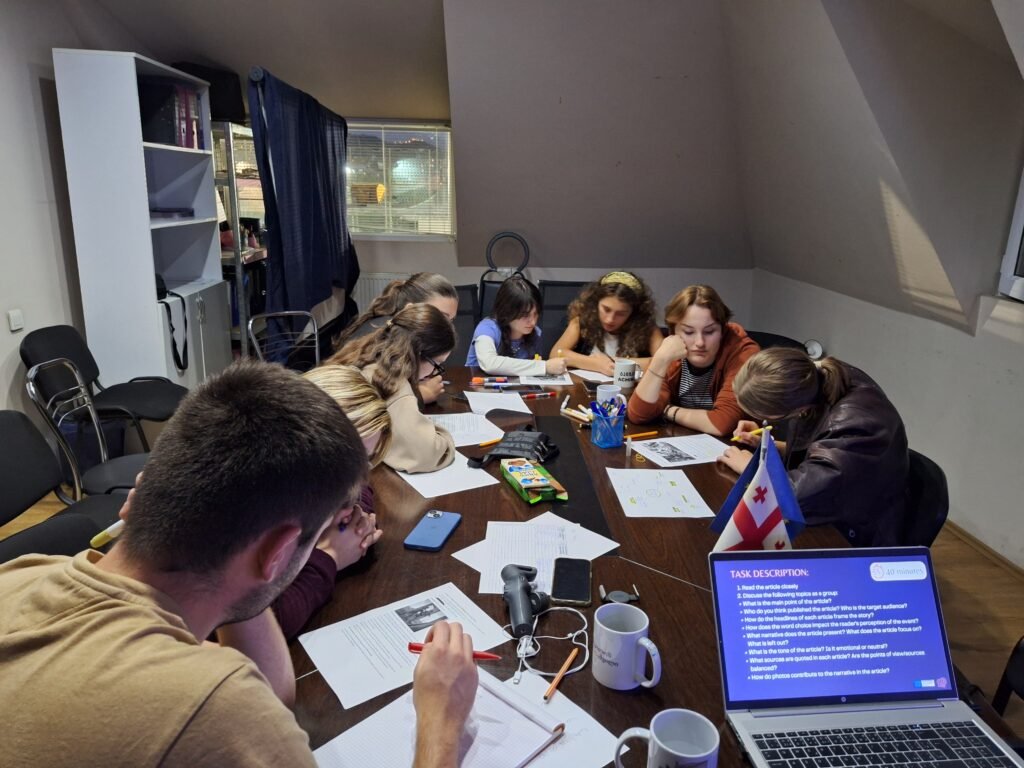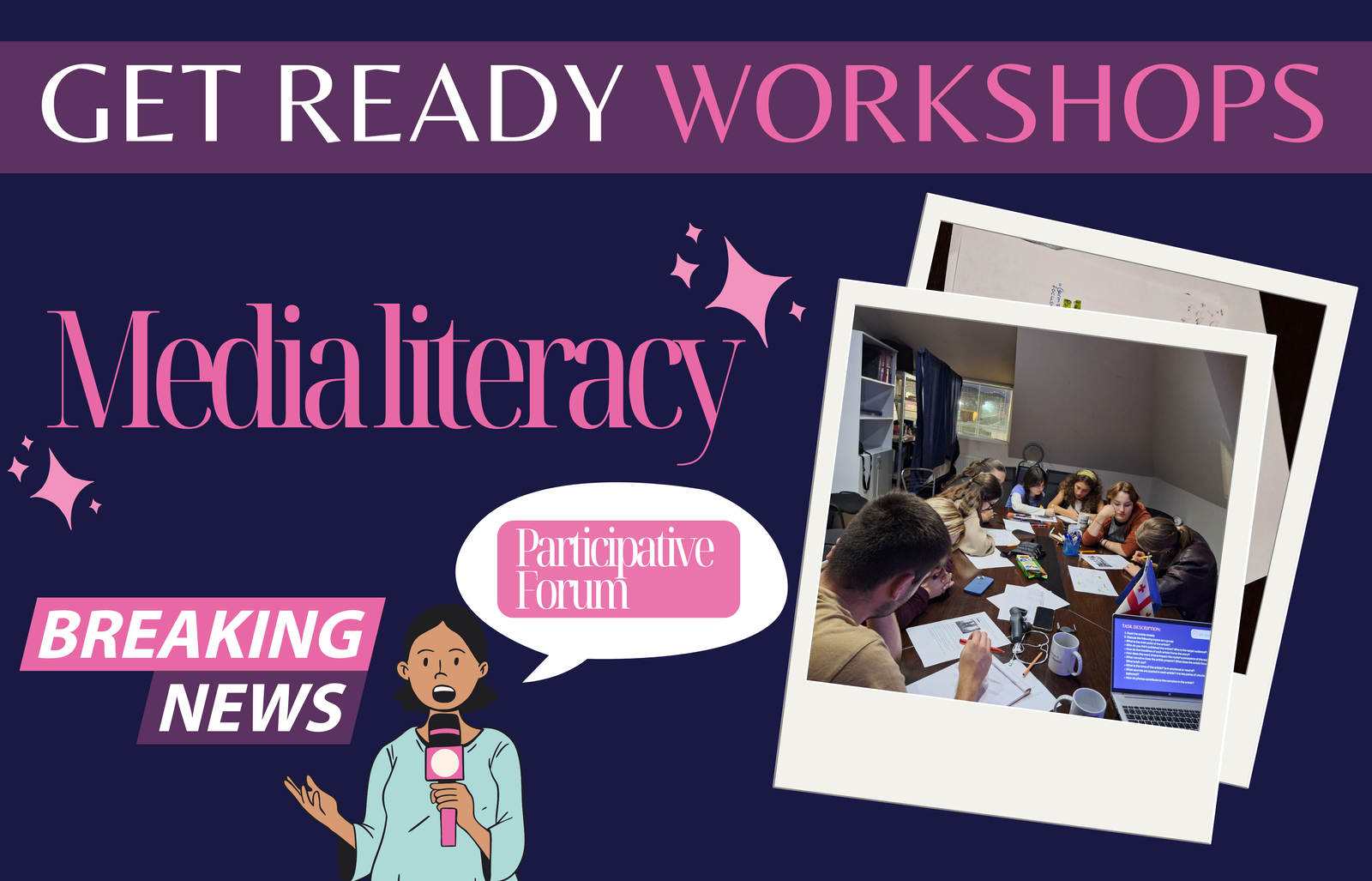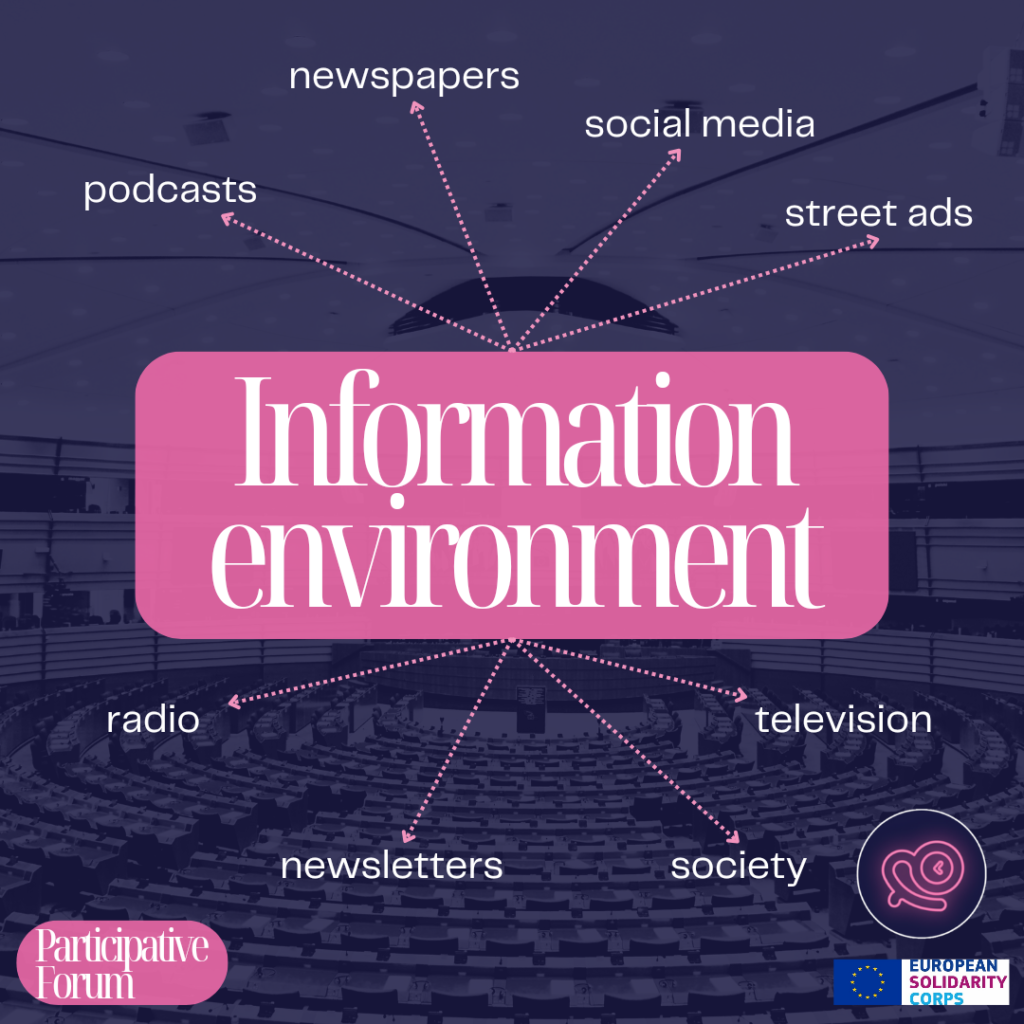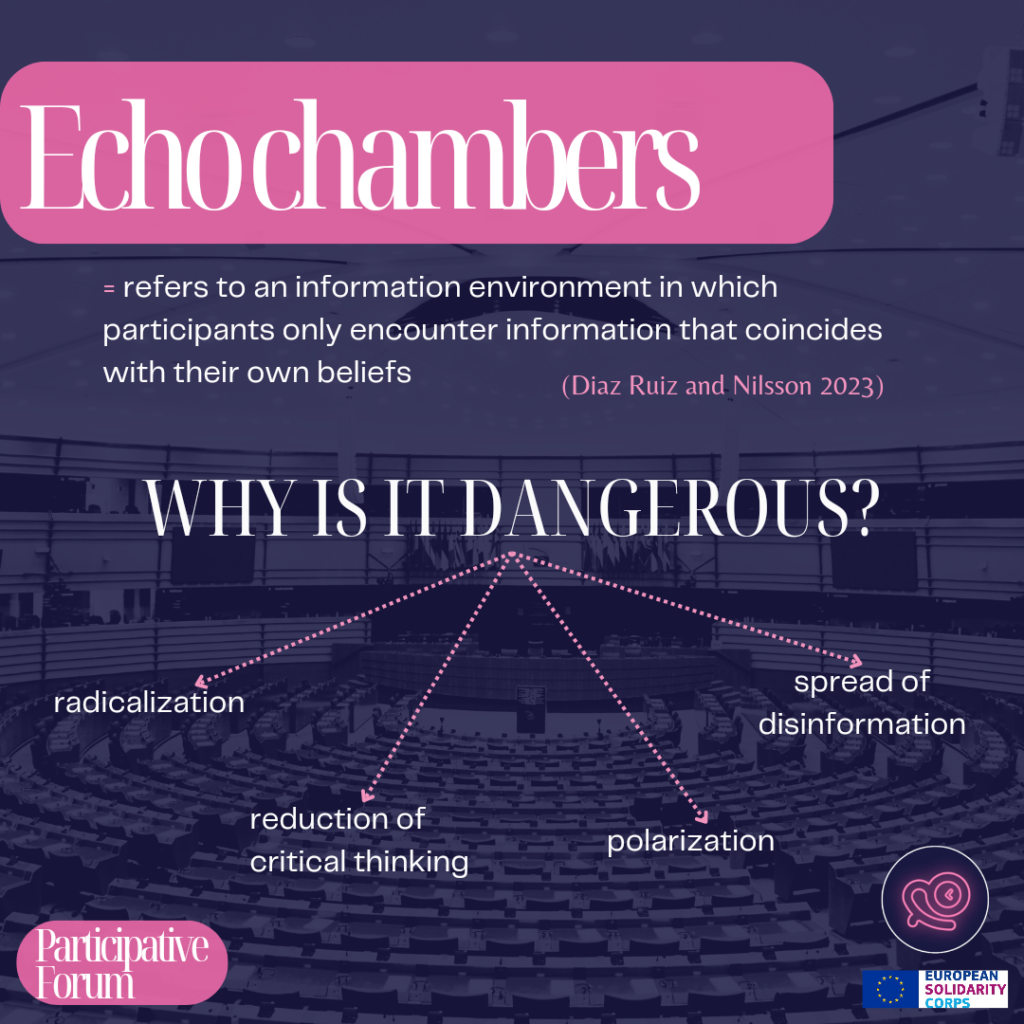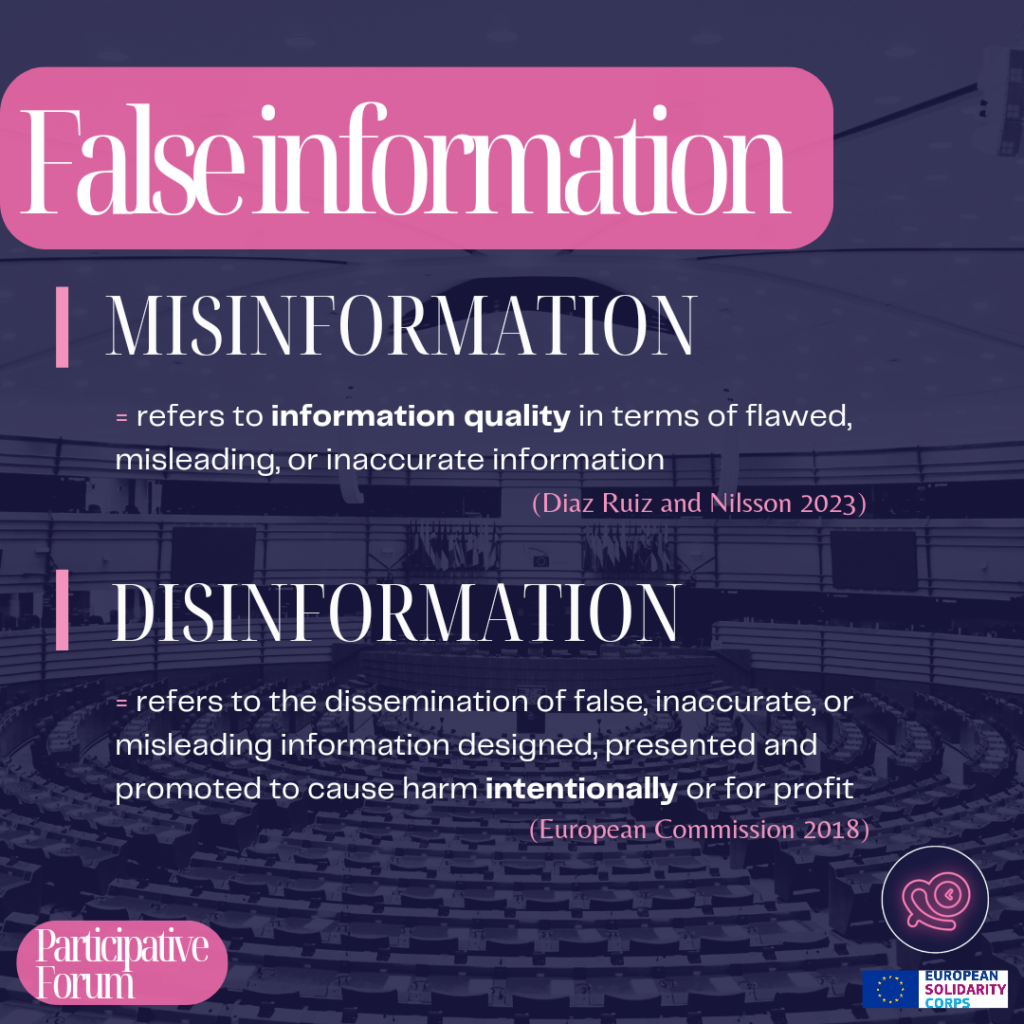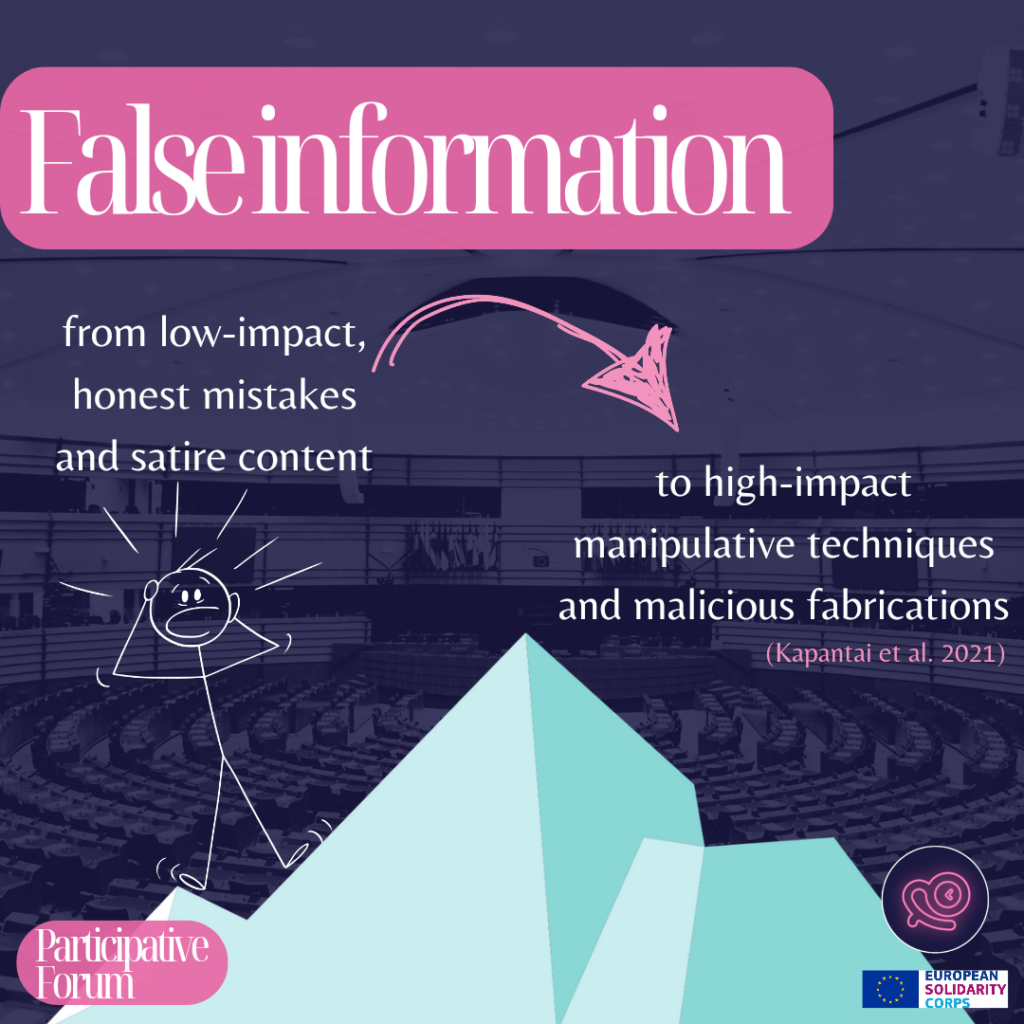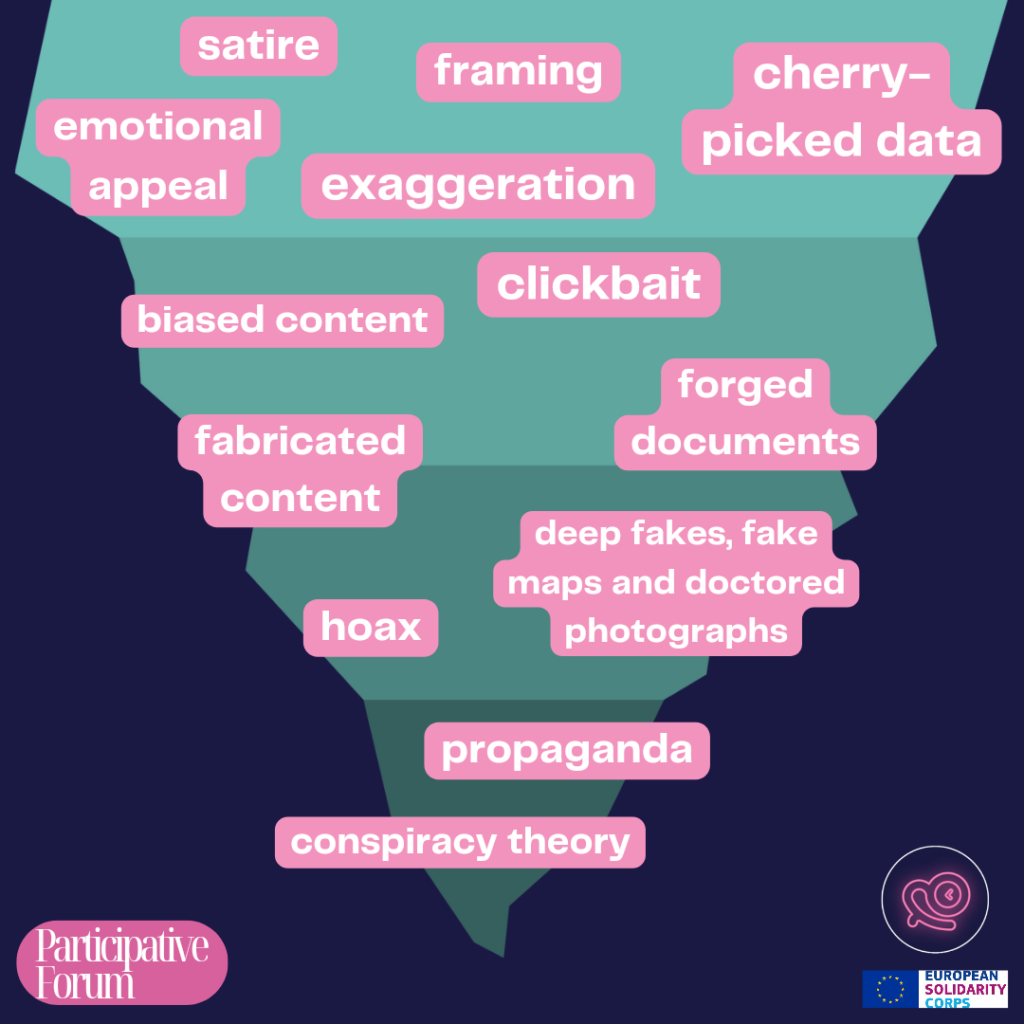In today’s modern world, in which we are constantly surrounded by information, developing strong media literacy skills is essential. This is why on 9 October we organized a media literacy workshop that aimed to equip participants with the tools to better navigate the complex and often overwhelming information environment. Read this report to see how it went:
We began the workshop by diving into the concept of information environments and echo chambers. These two topics are crucial in understanding how we consume media and how it influences our perception of the world.
An information environment is made up of all the sources and channels from which we receive news and other content, ranging from social media platforms to traditional news outlets. An echo chamber, on the other hand, occurs when individuals are exposed only to information that confirms their existing beliefs, limiting critical thinking and contributing to polarization and radicalization. Echo chambers are also an environment where disinformation and misinformation can spread easily.
For the first activity we created mind maps of our personal media environments, so participants could think critically about which media they consume and which media they might ignore. Each participant mapped out the different media sources they typically engage with—ranging from news websites, blogs, and podcasts to social media feeds and even political ads and word-of-mouth conversations. It was eye-opening to think about how much diversity or lack thereof existed within these environments and think about why were trust certain media to inform us.
The core part of the workshop focused on how to critically analyze media content. We discussed important questions like:
– What is the source of the information, and is it credible?
– What language is used, and how does it shape the message?
– Are there any biases present in the coverage?
To practice, we analyzed three articles about the same news topic, each from a different media outlet. One was from a mainstream global news organization and the other two were biased outlets. The same event was covered in all three, yet the perspectives varied widely in terms of tone, framing, sources used and even the facts highlighted.
Finally, we tackled an important and very dangerous aspect of our media environments: disinformation. We discussed the differences between misinformation and disinformation and how false information ranges from small mistakes, cherry-picked data, exaggeration or clickbait to government propaganda, deep fakes and conspiracy theories.
We concluded the workshop by reflecting on what we learned. Read these infographics to learn more about the topic yourself!
